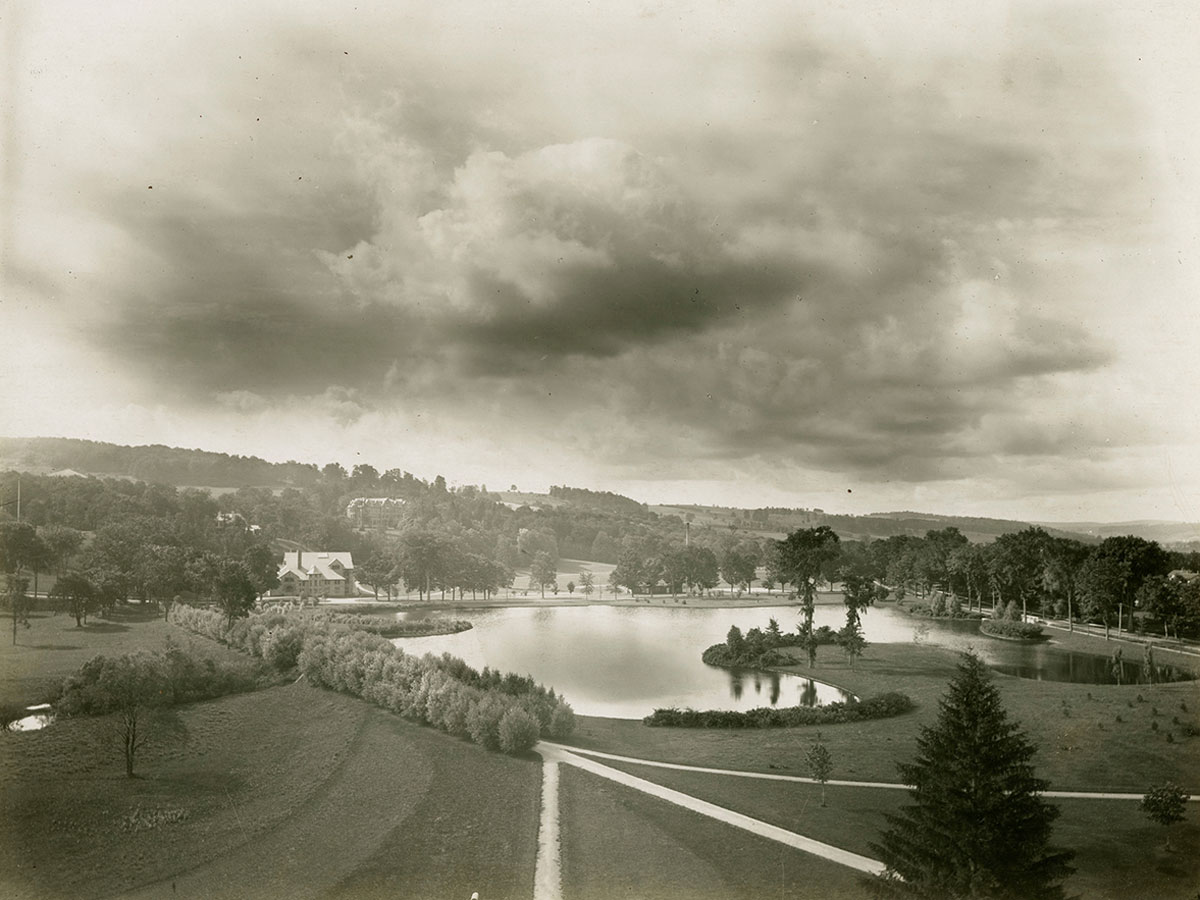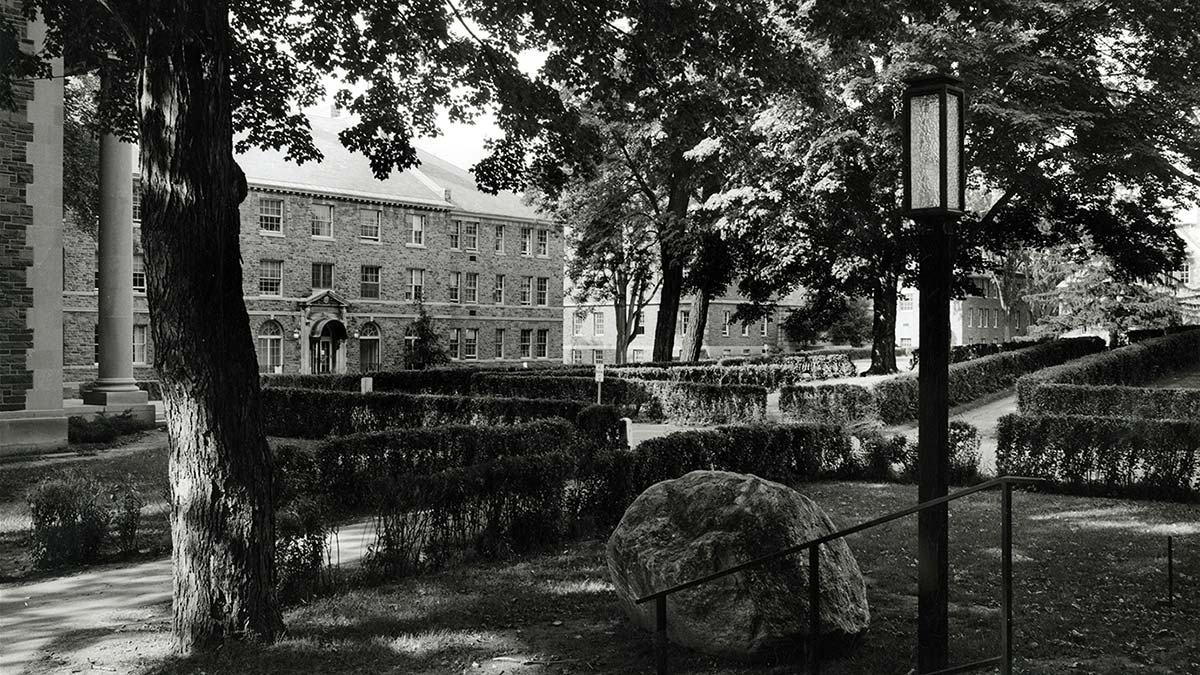

By Imani Ballard ’18
One of the most beloved features of Colgate’s campus, the lake and the picturesque tree-lined walkway were not present in the original campus landscape; but once completed, they quickly became landmark sites of memories and traditions in the community.
1905
Where the mud and the ooze once covered your shoes
“Colgate Verse” Madisonensis, October 27, 1903, Vol. 361
And willows rose slender and slim
Now lies Colgate lake, no longer a fake.
Thanks to Lant and to Dinnis and Jim”
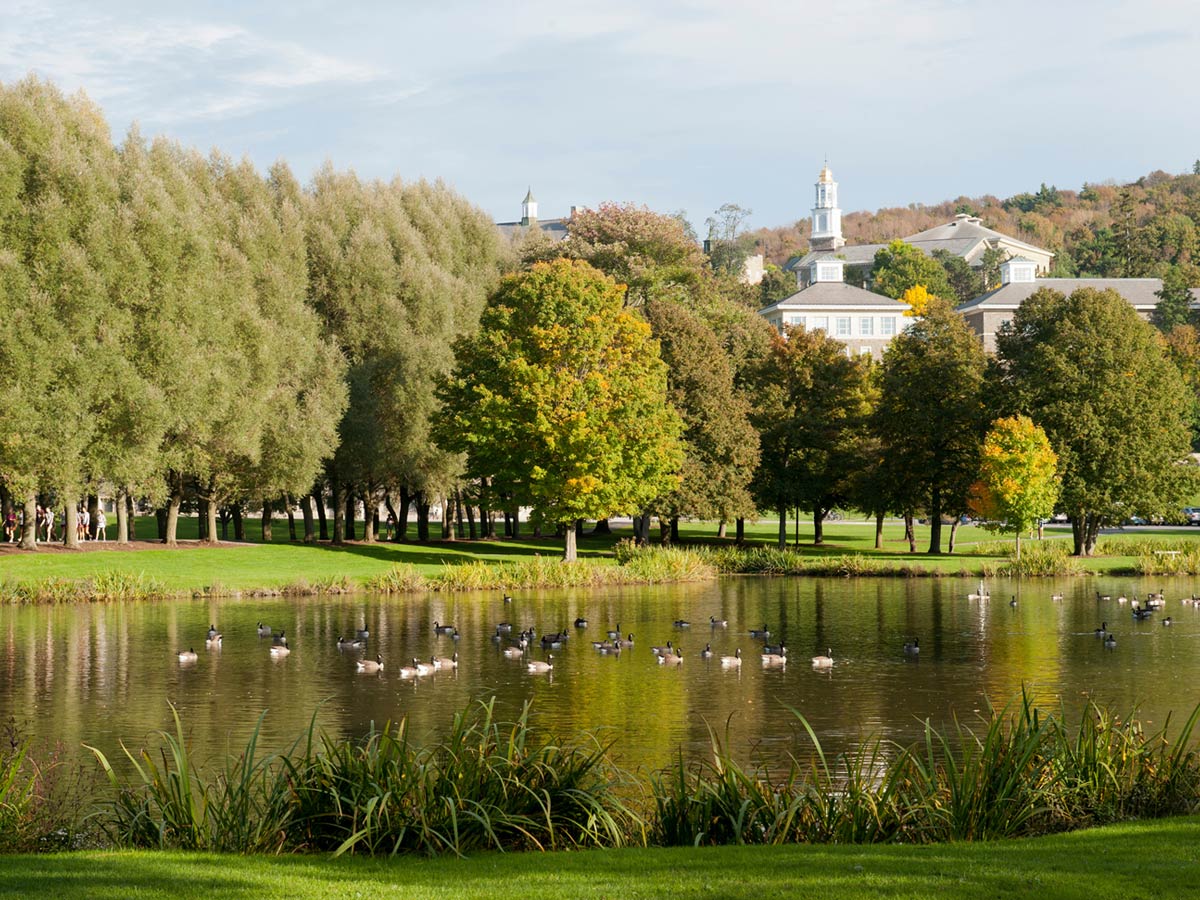
Campus in 2011

The above poem by a Colgate student honors the creation of Taylor Lake and the Willow Path, whose story begins more than 50 years after the university’s inception, when mathematics professor James Taylor, intrigued with notions of campus beautification efforts, petitioned the Board of Trustees to hire a professional landscape architect.
During the late 1800s, many administrators within Colgate’s ranks held onto the mainstream belief that manipulation of the grounds would be an act of indecency. As a result, the university was reluctant to invest in daily management of the landscape. And yet, Taylor persuaded the board to approve his request — with one caveat: the beautification efforts would have to first include a survey of the land, which would serve as the basis for future landscape plans.
According to Professor Robert McVaugh of the art and art history department, 1892 became Colgate’s architectural “transformative moment,” when Ernest Bowditch, landscape architect and engineer, was hired and introduced water mains, electricity, and a sewer system.
As McVaugh explains, Taylor was “one of the fathers of the modern Colgate campus,” but he “couldn’t have done it without Ernest Bowditch.”

Bowditch created a modern sewer system, which transported wastewater from the Colgate Academy and the buildings up the hill to the leach field, which was in the current location of Whitnall Field. Over the next decade, Bowditch then finished dredging the surrounding marsh-like fields of the lower campus, helping both to level Whitnall Field and to raise a path over the sewer line, thus creating Willow Path.2 As Colgate historian Howard D. Williams described Taylor’s aesthetic vision, “To relieve the bareness of the resulting embankment Dr. Taylor planted golden Russian willows, an inspiration which came to him from seeing Addison’s Walk at Oxford, his daughter recalled.”3
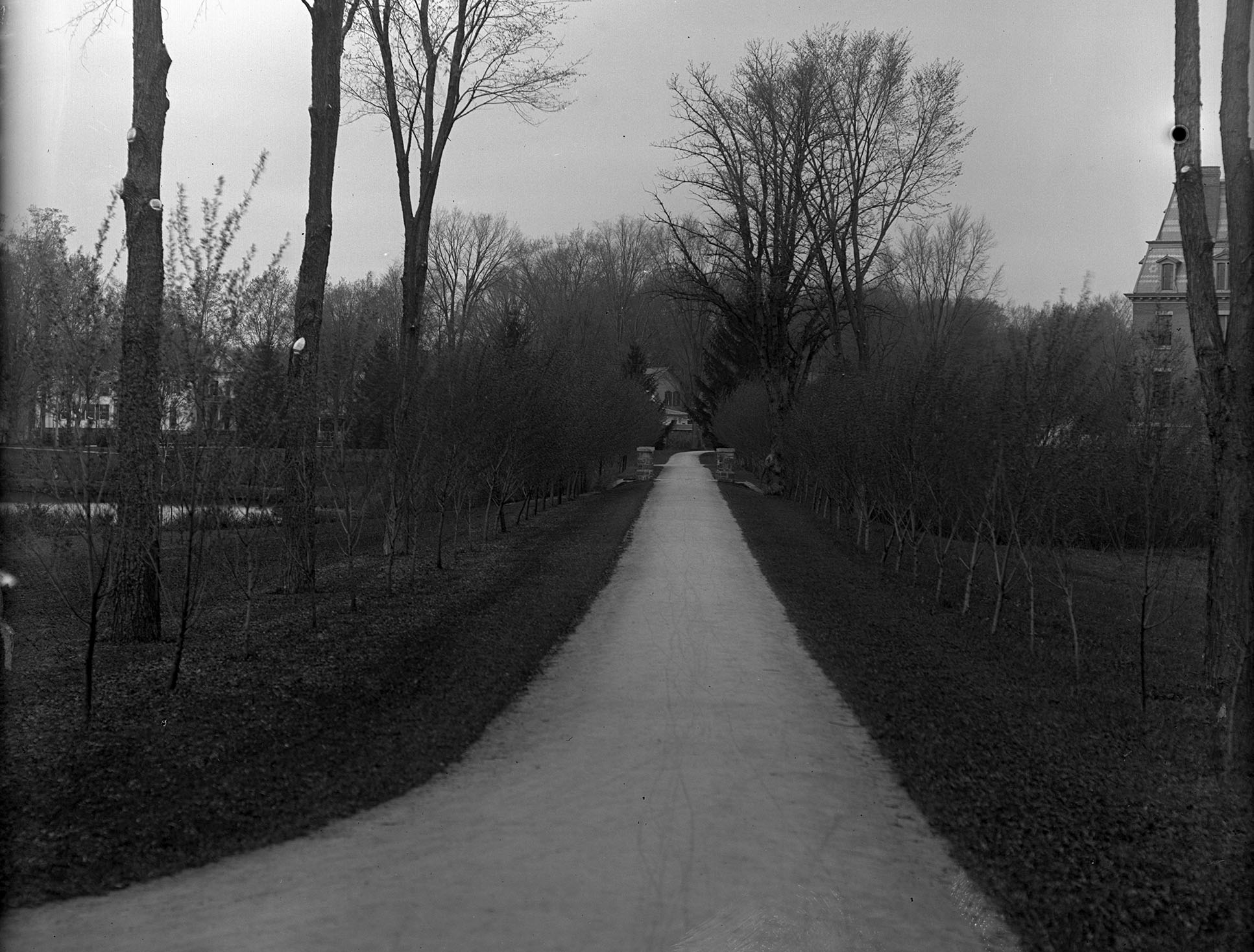
Willow Path with trees as saplings, circa 1905

The original Willow Path of the 1900s became professor Taylor’s personal project after the surrounding area was fully dredged; in 1903, he spent his summer committed to working on the lake and the dam at Broad Street. The lake opened for ice skating and other student-led activities the following semester4 — soon becoming host to many beloved Colgate moments and traditions.
When the willows reached the end of their life span in the late 1980s, the Committee on Campus Planning and Physical Resources decided on beech trees as a more sturdy replacement species for the path. Yet, in an attempt to salvage the Willow Path name and tradition, biology professor William Oostenink searched doggedly to locate similar upright willows (Latin name Salix alba var. vitellina 'britzensis') at a Maryland nursery, and 25 of the trees were installed in 1989 to restore the path’s canopy.5, 6
Legends and traditions
According to legend, couples who have their first kiss on the Willow Path bridge are destined to marry. Although it has disputed dates of origin, Professor McVaugh assumes this tradition was popularized in the mid-1920s, when women from other colleges came to the then all-male campus for what he called the “three great parties”: after the annual football game against rival Syracuse, Winter Carnival, and Junior Week festivities. Other early traditions include “burying the hatchet” in Taylor Lake, which concluded the yearlong rivalry between freshmen and sophomores.
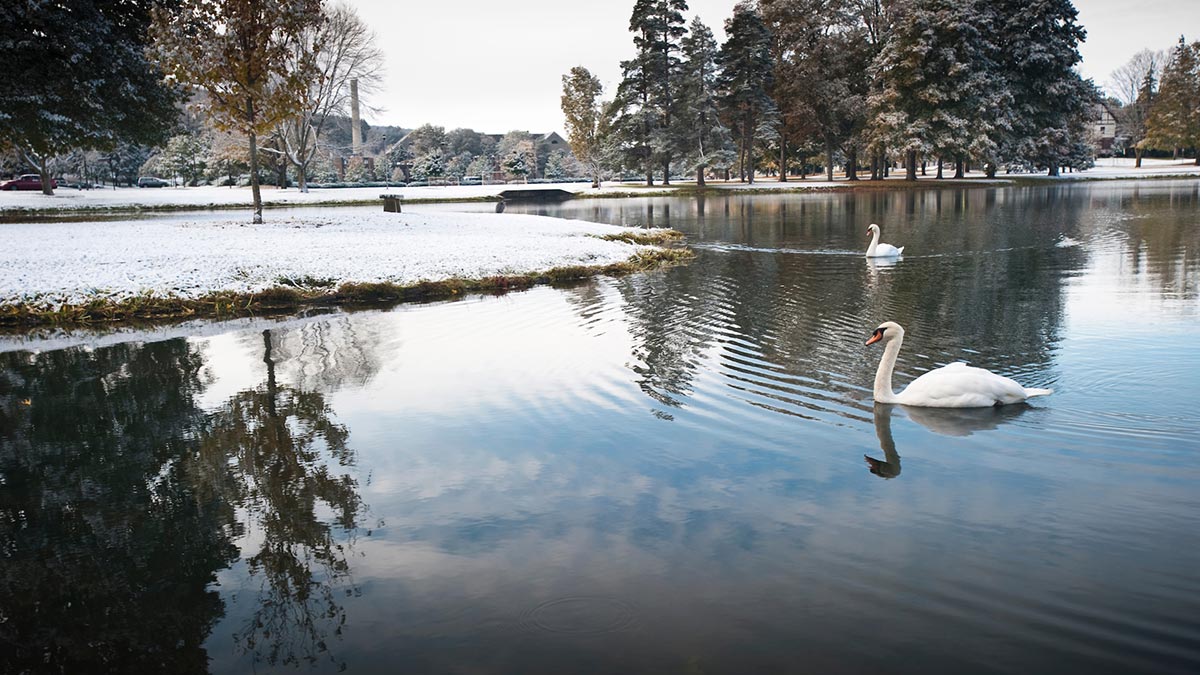
Adam and Eve, 2009

In 1929, a female mute swan was gifted to the university by Dr. Linn Clair Beebe and staff members. Soon afterwards, an alumnus from the Class of 1905, Julius Migel, introduced a male swan to accompany the lone bird. Students dubbed the pair Adam and Eve and, as the swans aged or flew away over the years, new pairs were introduced. Several generations called Taylor Lake their home.7
Yet, in 2015, the tradition came to a close as new state regulations governing the maintenance and care of mute swans were introduced. In an effort to negate restrictions to their quality of life, Colgate chose to no longer stock Taylor Lake with mute swans.8
Today, the Willow Path and Taylor Lake, still mainstays of the landscape, reflect a communal effort in the creation of Colgate as a leading institution of higher learning, both inside and outside of the classroom. To further “sustain and strengthen our natural and built environments,” the Bicentennial Landscape project and broader campus plan will ensure that Colgate will continue to be a beacon among the nation’s most beautiful college campuses in its third century.
Notes & Sources
- “Colgate Verse,” Madisonensis, October 27, 1903, Vol. 36
- Author interview with Robert McVaugh, professor of art and art history, June 13, 2018
- Williams, Howard D. A History of Colgate University, 1819-1969. New York: Van Nostrand Reinhold Co., 1969
- “The Lake,” Madisonensis, November 24, 1903, Vol. 36
- Patruznick, Michael. “Changing Face Of The ’Gate,” The Colgate News, May 5, 1989, Vol. 25. No. 22
- Willow Path history, 1911-1984, Buildings and Grounds collection, A1000, Special Collections and University Archives, Colgate University
- “Adam and Eve,” Colgate Scene, Spring 2011
- Walden, Mark, “Colgate community bids loving farewell to Adam and Eve,” Colgate News (blog), April 15, 2015
- Edward H. Stone, photographer. Buildings and Grounds collection, A1000, Colgate University Special Collections and Archives.
- Andrew M. Daddio, photographer, 2011. Colgate University Office of Communications.
- Photographer unknown, University photograph collection, A0999, Colgate University Special Collections and Archives.
- Edward H. Stone, photographer. Edward H. Stone collection, M2010, Colgate University Special Collections and Archives.
- Andrew M. Daddio, photographer, 2009. Colgate University Office of Communications.
